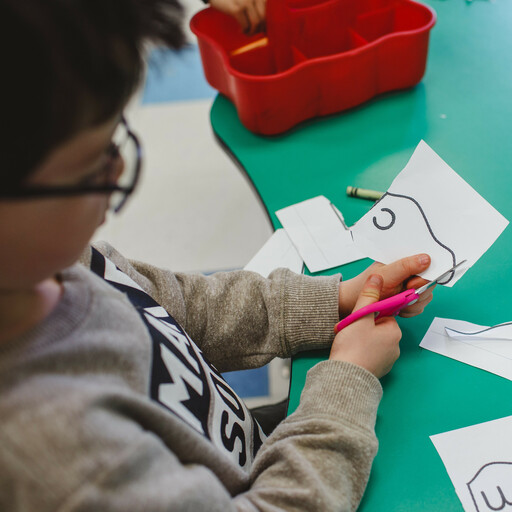This week, we’re starting our series with Exploring Emotions. The video, produced by Strathcona County’s Family Resource Network and Mental Health Capacity Building team, is for you and your child to watch together. It talks about all different kinds of feelings—both feelings that are easy to have and feelings that are hard to have. You’ll also meet the Kimochi® characters that will be helping navigate some of the feelings your child might have about starting school. Linked alongside the video is a feeling detective template to use with your child to talk about a variety of feelings. Research suggests that larger emotional vocabulary leads to improved social-emotional outcomes. Being able to ‘name’ our feelings helps us share what we’re feeling with others and get the support we need when we need it.
From the EIPS Early Learning team, we’ve provided below some resources for caregivers to support the development of fine-motor skills in young children. Kindergarten involves many fine-motor activities, including colouring, cutting, gluing, drawing and printing. Children are often not quite ready to print going into kindergarten, and that’s OK! This is often because muscle and visual development are still taking place, and children have differing amounts of exposure to and interest in these types of activities. Any activities that work on using your hands and co-ordinating your eyes with your movement help develop these skills.
Here are a couple of tips:
- Make it fun and meaningful! Have simple materials available for children to make their own creations. Children are often more motivated to work on fine-motor skills when they’re making something they’re interested in. Here are some ideas to set up a Creation Station.
- Start big! Think vertical! Summer is a great time to get outside with sidewalk chalk or paint. Put up paper on a fence and draw. If you have an easel, take it outside to paint or draw. Getting children in a good position to use fine-motor tools is easier when on a vertical surface, and the cleanup is that much easier outside!
- Limit the amount of tracing. While tracing can help with learning a motor pattern, it’s been shown to have limited effectiveness with connecting letter sounds to the letter they’re making. Also, when children think about how to make something without the lines to trace, their brain is engaged in different areas. If your child enjoys tracing, try to observe and make sure they’re practicing the letter/shape the correct way—for example, starting from the top.
- Lose the lines! If a child is a new printer, they’re better off not worrying about the lines at first. You can provide a box or smaller area if you feel they’re ready to make smaller letters. At this stage, the purpose is to put the lines and shapes together to make the letter.
- Drawing is a very meaningful and fun way to get ready to print. Providing different types of paper, tools and reasons to draw often gets children engaged in sharing their ideas through drawing.
- Printing your name is an exciting thing to learn! If your child isn’t quite ready to print—or has a difficult or long name—spend time talking about the letters and finding ways to sequence the letters. If children can recognize their name before kindergarten, that’s also very helpful!
Want to learn more?
- This 10-minute video explains more and has some suggestions to make fine-motor learning fun.
- This five-minute video provides more specific information about pre-printing shapes, which help children be ready to print.
Does your child have some barriers to printing/drawing due to a disability or developmental delay? Don’t worry, your school team will work to provide ways to continue to develop these skills along with finding alternative ways for children to participate and demonstrate learning in their kindergarten activities. Continue meeting your child where they’re at with their motor skills and encourage hand use with a variety of materials in a variety of everyday situations.



